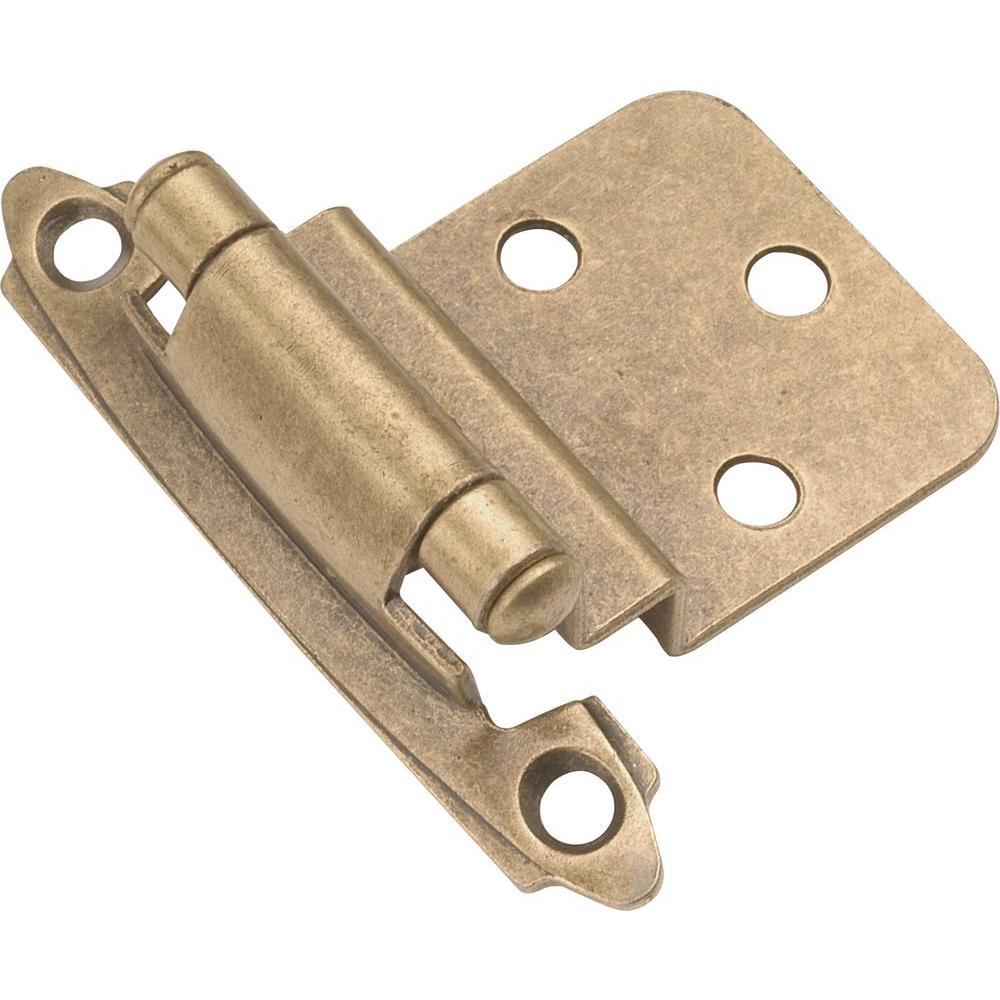How To Install Self Closing Hinges On Cabinet Doors

More How To Install Self Closing Hinges On Cabinet Doors videos. Position the hinges: Put four thicknesses of self. Install the hinges and. A no-mortise hinge is a fast and efficient way to hang inset cabinet doors.
Q: We'd like to install cabinet doors with concealed hinges. How do we do that? —Jeffrey Odenwald, Chesapeake, Va. Cabinetmaker Steve Roca replies: Whether you're hanging new doors, as I'm doing here for a hallway cabinet, or swapping out old hinges, concealed or Euro-style hinges are a dream to install. Unlike the butt or knife hinges often used in kitchen cabinets, they can be adjusted along three axes with the turn of a screwdriver, so you can easily fine-tune the door's fit.

Concealed hinges can go in face-frame or frameless cabinets and on any door type—including full overlay, partial overlay, or inset—as long as the doors are at least ½ inch thick. The hinges I'm using are for frameless cabinets with inset doors. To find the hinge that will work with your door type, consult the hinge company's online brochures and customer service line. Then, with the right hinges in hand, follow the steps on the next page to install them. Shown: Steve Roca adjusts a soft-close inset hinge to even up the gap around the door.
. Drill. Self-adhesive notepaper (i.e.
Post-its). Package sealing or masking tape. Screws Step-by-step instructions on installing surface-mounted hinges If you like the idea of quick and easy hardware installation, you’ll love using surface-mounted hinges.
How To Install Self Closing Door Hinge

There’s no complicated routing and chiseling—just great-looking results in a hurry. Whether repairing an old box or hinging a new one, the steps are the same. Photos by Robert J. Settich This article originally appeared in Taunton's Complete Illustrated Guide to Choosing and Installing Hardware (2003). The finished product Add spacers and mark centerpoint: If you’re uncomfortable visually aligning the hinge, you can position it with a try square. Drill the pilot holes and drive the screws, but keep checking as you work to make certain that the base and lid remain flush. Repeat the process for the other hinge,and remove the tape and the spacers.
The slightgap at the back of the box ensures that the front of the box will close tightly even when the box changes size due to changes in moisture content. Drill the pilot holes Space and attach the hinge leaf: Make sure that the screw is fully seated in the countersink. Hook the plate over the end of the door, and register the barrel of the hinge against the face of the door. Drill pilot holes, and drive the screws into the holes in the hinge leaf that have the countersinks visible. Move the jig to the carcase, and set a spare hinge atop it and with the barrel against the edge of the carcase. The hinge will be backward in this position, so drill pilot holes in the leaf that has its countersunk holes toward the side of the carcase.
A self-centering bit makes this an easy and accurate job. Measure overhang The usual overlay for kitchen cabinet doors is 3⁄8 in. The face frame of this cabinet has rails and stiles that are 2 in. Wide, so rip a plywood strip 1-5⁄8 in. Wide, and place it flush with the bottom rail. That way, when you rest the doors atop the strip, their lower ends will overhang the opening by 3⁄8 in.
I also wanted a 1-5⁄8-in. Reveal along the vertical edge of the door, but I set my adjustable square about 1⁄32 in. Larger than that to compensate for a bit of springback when the laminate shim was removed from the hinge. Drill pilot holes and drive the pan-head screws to secure the hinge leaf to the stile.